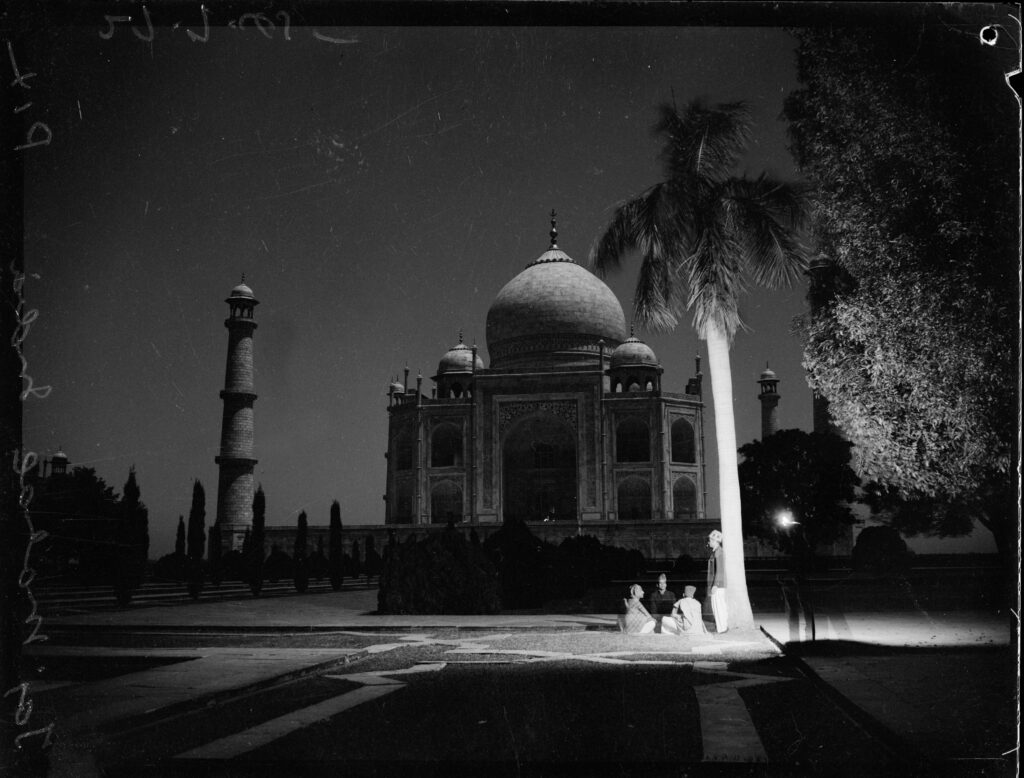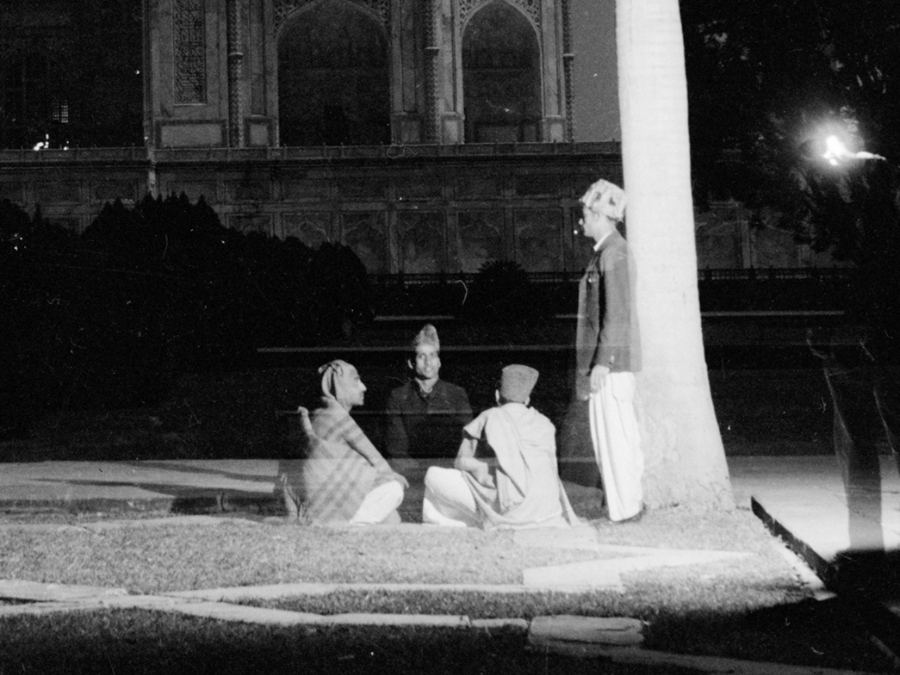

The original photo (left) is called Taj Mahal, India, 27 July 1945, by Norman Herfort, from The State Library of New South Wales. It is in the public domain.
My derivative (right) is called “Group in front of the Taj Mahal, 1945,” by Theo Thomas, licensed under CC BY-NC-SA 4.0.
When I saw the original image, I was immediately drawn to the group of people in the corner because of how brightly they were lit. Luckily, the scan of this photograph was very detailed, so I was able to zoom in and crop the scene to see them better. I consider this crop to be changing the focal point.
I love that the figures here are semi-transparent yet sharp, letting us know that they were probably sitting there for a while during a relatively long exposure. I don’t know if they were posed by the photographer or not, or if they simply saw the camera and decided to get in the shot. I don’t know if they were friends or coworkers or strangers. I just like that there is a sense of both movement–they had to have moved at some point in order to be slightly transparent–and stillness at the same time.
I thought it would be fun to try to very strongly emphasize the thirds in the picture, with the palm tree and the ground roughly aligning with horizontal and vertical thirds, and the standing man’s head falling at the top right intersection of the thirds. My goal with that was to enhance the feeling of stillness, especially with the bold, vertical line created by the tree and the standing man. I don’t know if that was necessarily a good design choice, but I sort of like how it turned out.


Hi Theo, thanks for sharing this image with us! I like how you really changed the focal point of the image by cropping it. In the original image, the focus is definitely on the Taj Mahal, but by cropping it you tell a different story. You’ve removed the visual pull of the large building, and instead focus us entirely on the group of friends present in the image. I think it would be cool to pull the group a little bit more down and to the right to make use of the negative space on the other side of the image. Very cool and thank you for sharing!
Hi Theo,
You picked a very cool image for this assignment; the cropping really changes the meaning of the photo. In the original photo the group of men is secondary to the Taj Mahal, but with your cropping, at first glance, it just appears to be a group of young men hanging out in front of a nondescript building. However, the cropping also illustrates and emphasizes the long exposure time of the photograph, which is a cool effect you can’t see in digital photography. However, I do think the focal shift of the image would have been more effective if the right shadow of the standing man were cropped out, allowing for the group of men to shift to the right third and extending the context of the background. This just goes to illustrate that cropping can be done in a number of ways depending on the intent of the creator. Thank you for sharing!
Hi, Theo!
My eye was first drawn to the title (“The Taj Mahal, 1945”) as I scrolled, so when the image rolled up, I was instantly drawn to the Taj Mahal. It took me a moment to see the people in the picture. I may have focused on the Taj Mahal, but you focused on the people, which completely changes the image’s perspective instead of the Taj Mahal is a nondescript building with some friends gathered for a chat. The cropped version of the image enhances the long exposure time as the people are transparent. It reminds me of that trend in the 19th century called Spirit Photography. Thanks for sharing!